You should probably follow a different game blog... for your sanity
Don't wanna be here? Send us removal request.
Text
Futuristoblog
Now that we know the current state of violent video game controversy, its time to think about the future.
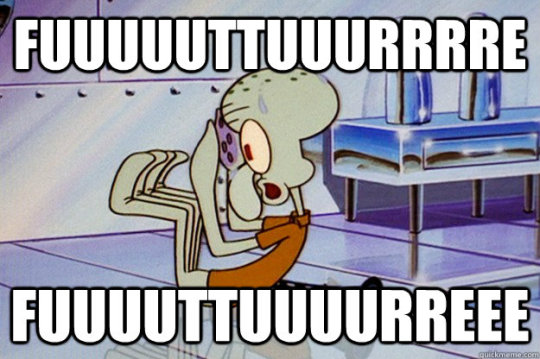
Droppin’ the Ban Hammer
In the United States, predicting the future of this issue is less complicated than in other countries. Germany, for example, has tried passing laws that would ban violent video games altogether. Germany is notorious for censoring and banning controversial video games. I don’t believe Germany will become more lenient on this issue anytime soon, and other countries such as Switzerland have followed this trend of attempting to ban violent video games. I believe this could be very harmful to the video game industry. If more countries try to ban violent games, it could close off a large fraction of consumers from the market, which could force developers to think twice about including something in their game. If including violence in their game means they can’t distribute their title to several countries, developers might remove violence from their game just to appeal to a larger consumer base. In this way, violent video game bans could inadvertently lead to restrictions on creative freedom, which could damage the industry.
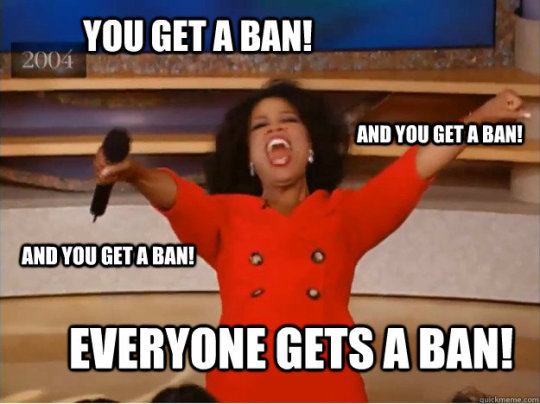
Pictured above is Germany.
Hatred - 2015
In 2014, a trailer was released for an indie game called Hatred, which caused a great deal of controversy. The trailer depicted a man arming himself and going outside to kill innocent humans while narrating about how much hatred he has for the world and everyone in it, and how his “genocide crusade” would be a start for change. Naturally, Hatred stirred up controversy on the internet. The game, developed by Destructive Creations, had players going on a killing spree, mowing down innocent civilians and police officers in New York City. It was actually removed by Valve Corporation from their Steam Greenlight service, but was later brought back with an apology from Gabe Newell, president of Valve Corporation.
Hatred was made with the sole purpose of inciting controversy. People buy games like this because they want to see if the controversy is justified. Hatred was criticized upon its release not for its controversial content, but because it was generally a poorly designed game. Thus, the public’s general consensus was that the controversy was not justified, because the game was not good and quickly fell under the radar. I do not think games like Hatred are healthy for the industry and they do not help this issue. Controversy for the sake of controversy helps no one. I believe that if more games like Hatred arise, the media could start taking the issue of violent video games less seriously (yes, even less seriously than they already take it).
As if it were not obvious that the developers wanted to be controversial, look below at the logo for Hatred placed next to the DOOM logo, and notice the resemblance.
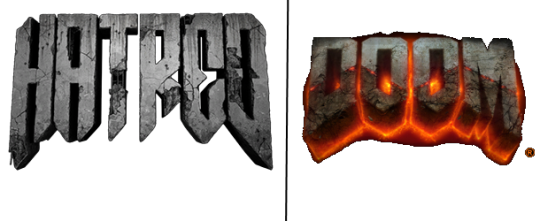
The fonts for the Hatred and DOOM logos are nearly identical, showing the extent to which the developers wanted to incite controversy. By using a font with a similar style to DOOM’s the developers remind the observer of the controversy that arose from DOOM.
Wrap-Up
Video games are being banned by various countries around the world. While this could be harmful to the industry, I don’t believe it will cause any major problems as the issue is beginning to subside. However, if more developers follow the path of Hatred and incite controversy for no reason, the media may begin to take the issue less seriously. I would like to see a future in which violent video games are seen as ways for mature human beings to pass the time, and not dubbed murder simulations by the media. I believe this is an achievable future because newer generations have grown up with video games and will see them as normal when they take the older generation’s place.
What I Learnt
I had fun writing this post, and I learned a few things along the way. Through my research, I learned more about different countries’ attempts to ban violent video games. I didn’t know Germany and Switzerland both tried very hard to ban violent video games all together. I actually read about the Hatred controversy as it was happening because it only occurred a few years ago. But I forgot it had been removed from Steam Greenlight at first, which I found interesting. It shows how controversial this game was.
Sources:
https://en.wikipedia.org/wiki/Hatred_(video_game)
http://www.technobuffalo.com/2010/03/27/is-your-country-the-next-to-ban-violent-video-games/
#game stuff and things and stuff and things and stuff and things and stuff and things and stuff and things and FUUUTUUUUUUURREEE and stuff#arent my hashtags so relatable and fun and oh gosh i can have hashtags in hashtags thats so cooooool kay im done now have good life pls
0 notes
Text
Modernoblog
(Holy rusted metal, Batman! This was a long one)
Now that we know about the history of violent video game controversy, its time to discuss this issue from a modern lens. In this post I’ll show different incidents where video games were attributed to real violence, and what research has been done to determine whether or not real-world violence can be attributed to violent video games.
Manhunt Murder - 2004
In a 2004 murder case, the victim’s parents believed that the murderer was influenced by Manhunt, a violent 2003 video game from the creators of Grand Theft Auto (another series notorious for its violence). It was discovered that the video game in question actually belonged to the victim, and the crime’s motive was not the violent game, but “drug-related robbery”. All legal parties involved eventually agreed that the game was not a factor. However, the irreversible influence this case had on the industry and the media had already taken hold. The game had already been banned by large retailers. When it came time to publish a report of the case, the Daily Mail reported “Teenager gets life for ‘Manhunt Murder’,” choosing publicity and attention over the facts. Because, of course, video game controversy would provide the paper with more attention than a drug-related crime.
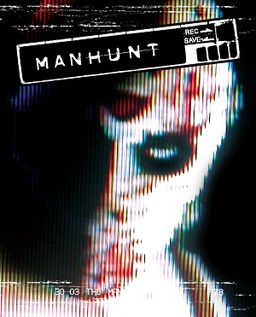
Manhunt (2003)
Children and Violent Games
In November 2016, an eleven year old boy in Canada took his parents’ vehicle for a joyride after playing Grand Theft Auto. His parents were sleeping, and he wanted to see what it was like to drive in real life after playing the game. As I mentioned before, Grand Theft Auto is notorious for putting the player in the persona of a criminal. The only factor to blame in this situation is the parents. The game is clearly rated M for Mature and on the back of the game there is a list of reasons why it is rated M (and GTA’s list is pretty extensive). The retailer even warns parents of mature content when they purchase games with an M rating. If that isn’t enough to convince the parents that the game is not for eleven year old children, they should have taken notice that the game is named after a felony. Kids’ brains have not fully developed yet, therefore they are very impressionable. Thus, they should not be playing Grand Theft Auto. That said, every child is different, and I believe it is up to the parent to decide whether or not their child could handle an M rated game. Regardless, Grand Theft Auto is pushing it. (For example, I was personally allowed M rated games at the age of 12. However, I was forbidden from Grand Theft Auto until I was 14, and I think I turned out better for it).
Click here to watch a news video covering the boy who took his parents’ car for a joyride
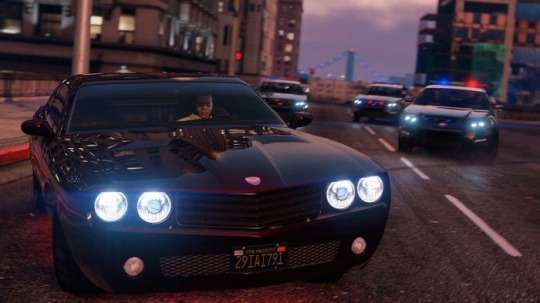
Grand Theft Auto V (2013) (Note: Not a picture of the 11 year old being chased by cops, but a black gentleman)
Research
With all the controversy surrounding violent games comes many people trying to answer the question “Do violent video games make us violent?” The answer that research has seemed to arrive at is simply “We don’t know.”
There are too many factors that contribute to aggression, and trying to narrow aggression down to one cause is nearly impossible. Rich Stanton, a writer for The Guardian, writes “The problem with violent video games and aggression is that defining and categorising both is an inexact science.” Stanton examines studies made in 1991, which categorize ‘shoot-em-ups’ as games like Goldeneye 007, Medal of Honor and Quake III. These games are drastically different from the modern first person shooter, which are visually realistic and often contain a competitive online element. Furthermore, ‘shoot-em-up’ more commonly refers to 2D space shooters than first person games. Stanton proceeds to reference research performed by Dr. Peter Etchells, co-author of a research paper entitled ‘Prospective Investigation of Video Game Use in Children and Subsequent Conduct Disorder and Depression Using Data from the Avon Longitudinal Study of Parents and Children’. Etchells says, “In the questionnaires they asked essentially what kind of games do you play, and categorised them by genre. Now the options aren’t great, and it’s a point that came up in review: shoot-em-up is a different category to FPS. So there are assumptions in what we’ve done, in the sense that if you’re playing Goldeneye you’re probably going to tick the ‘shoot-em-up’ box, even if that might not be the exact genre.” Many different games could fall into many different genres, therefore it is difficult to determine which games should be classified as violent. Some games should obviously be classified as violent, however most games fall into more than one category, and could be classified as either violent or non-violent. Should Mario be classified as violent because the player smashes Goombas? Should Portal be classified as violent because the player shoots a gun? These are problems researchers struggle with when handling this topic.
Echtell says, “We didn’t look at context massively in our study, but how you play videogames will likely have an effect on what their effect on you is.” Some people play video games exclusively for competitive online multiplayer. Others choose to play by themselves. Others play with their families. Each of these types of players play video games with a different mindset. You can see where complications could arise if a researcher gathers different gamers who play different games in different ways and tries to compare all of their behaviors.
Aggression also differs from person to person. If someone has mental issues such as depression or psychopathy, violent video games might have more of an effect on their behaviors than on those of a mentally stable individual.
Wrap It Up
There are many news stories that attribute real-world violence to violent video games. But what it boils down to is research, and research is tough - just ask a scientist. There are many studies that show a correlation between video games and violent behavior. There are just as many studies that claim the exact opposite. The truth is that video games are so complex that trying to narrow down results to arrive at an exact conclusion is nearly impossible.
What I Learnt
This was a very interesting post to make. I had planned to go into detail about the Columbine shooting, but I decided against it as that was so far in the past that I probably should have included it in my Historoblog (but, oh well). I started researching recent violent acts attributed to video games and I found the Manhunt case. I had never heard of this case before, and I found it interesting that the media had continued to report false information just for publicity. That’s a little scary, because it makes you wonder how many news stories the media is feeding us solely to get a few more people to click on a link. I had heard about the eleven year old joyride story before, and I decided to include it. Even though it does not have to do with ‘violence’ (there are many stories about violent shooting I could have included instead of one about a child driving a car) I believe it highlights how much a violent video game can effect children and their undeveloped brains. So yeah, this was fun. See ya next time ;)
Sources:
https://www.youtube.com/watch?v=2THao_cIgIE
https://www.theguardian.com/technology/2016/mar/09/do-video-games-make-children-violent-nobody-knows-and-this-is-why
#This is 1217 words which is way past the minimum of 600 oh no i went to far didnt i? ive reached the maximum characters for a hashtag#So i'll just make a new one i love hashtags ok im done now byeeeeeeeeeeeeeeeeeee
0 notes
Text
Historoblog
Race of Death
In this blog I’ll be discussing the history of violence in video games. It all started in 1976 with an arcade cabinet. Before I get into the aftermath of this game, put yourself in the shoes of a parent in 1976. You take your child to the arcade and watch them peruse through the arcade cabinets. After finishing a game of Breakout, they rush to the back of the arcade, where there’s a crowd of other kids gawking at a new arcade machine called Death Race. You become curious yourself as to what seems to be holding the attention of every kid in the arcade, and upon looking at what you can see of the screen, you are shocked. Death Race put players behind the wheel and sent them on a mission to run over as many “gremlins” as possible, turning them into, well, tombstones. With a few alterations to its graphics, Death Race probably could have escaped controversy. But the fact that those “gremlins” had a very humanoid figure made this game an easy target for controversy. The Vice President of Exidy, the company that developed Death Race, has commented on Death Race’s violent implications, explaining “The net result was that we handled the whole thing very well and the publicity was good for the industry.” From Exidy’s point of view, the controversy surrounding the game generated publicity that was good for business. The game even suffered controversy from within the video game industry. Nolan Bushnell, co-founder of Atari, responded by saying, “We were really unhappy with [Death Race]. [Atari] had an internal rule that we wouldn’t allow violence against people. You could blow up a tank or you could blow up a flying saucer, but you couldn’t blow up people. We felt that that was not good form, and we adhered to that all during my tenure.” Being the first game to stir up controversy, Death Race is an important piece of this social issue’s history.
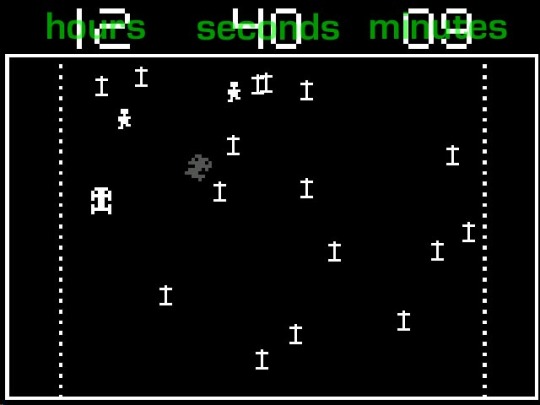
Death Race
The 80′s
After cooling down from Death Race (and the notorious video game crash of 1983), the gaming industry thrived through the late 80′s as arcades became popularized and Nintendo became a household name. Nintendo’s censorship policies removed anything that could offend from the home console version of their games. Through the 80′s, cartoon violence became the norm, so not much occurred pertaining to controversy over video game violence.
The ESRB
In 1992, a game called Night Trap was released on Sega consoles. With advancements in technology, this game featured full-motion video footage of live actors thanks to a little something called the CD-ROM. Despite containing no extreme acts of violence, Night Trap stirred up controversy for its subject matter, which included trapping women. Also in 1992, Mortal Kombat was released, which immediately sparked controversy with its visceral finishing “fatality” moves. Following the release of these games, the U.S. government got involved. In 1993, a Senate Committee Meeting on Violence in Video Games was held. Directly referencing games such as Night Trap and Mortal Kombat, the government threatened to intervene if the industry did not do something to ease the issue. The very next day, DOOM was released. Notorious for its graphic violence and satanic imagery, DOOM was, of course, a major source of controversy, and was even called a “mass murder simulator” by critic and Killology Research Group founder David Grossman. The industry knew something had to be done quickly if it were to avoid government regulation. Thus, in 1994 the ESRB (Entertainment Software Ratings Board) was formed. Still in use today, the ESRB is a self-regulating entity that assesses and rates video games based on the amount of mature content they contain.
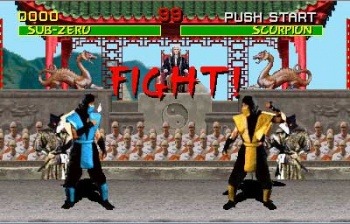
Mortal Kombat
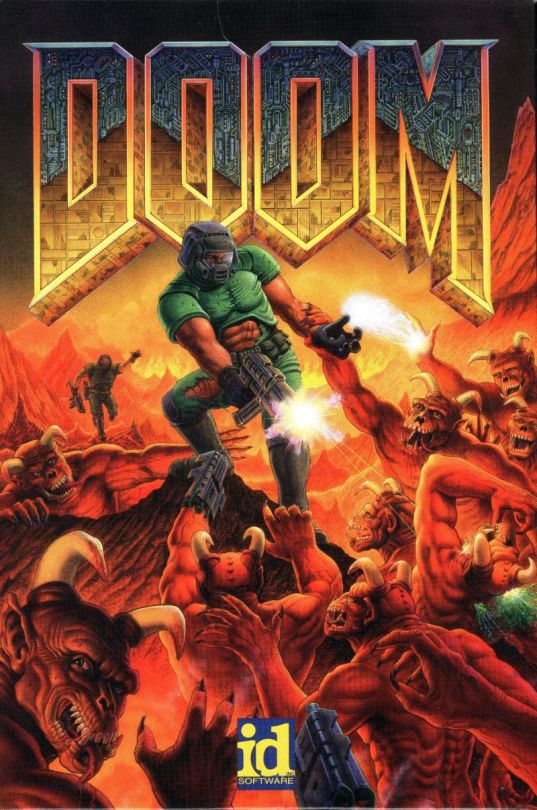
DOOM Cover Art
Wrap-Up
I think that’s a good stopping point when discussing the history of this social issue. Controversies from games such as Death Race, Night Trap, Mortal Kombat and DOOM led to warnings of governmental intervention, which led to the ESRB. The ESRB is still in use today, of course, and has saved the industry from federal regulation.
What I Learned
I genuinely find this topic interesting, and have researched it in the past on my own. However, I found it interesting that Nolan Bushnell, co-founder of Atari, disapproved of Death Race. Discovering this information led to me reading articles not-as-related to my topic, and I learned that Nolan Bushnell actually has very opposing opinions from me when it comes to video game violence. That said, I have super respect for that man and think his contribution to the industry is immeasurable. I also learned more about Death Race, which is a game I had heard about when researching this social issue, but never learned all about. Researching about this topic has also made me think about how awful it would have been if the ESRB were not formed. The government may have enlisted regulations on what subject matter a video game could contain. Not being allowed creative freedom, the industry could have collapsed completely. I learned a few things from researching my topic, and I had a lot of fun writing about it.
Sources:
https://en.wikipedia.org/wiki/Doom_(1993_video_game)#Controversies
http://www.usgamer.net/articles/a-brief-history-of-video-game-violence-part-1-death-race-to-mortal-kombat
0 notes
Text
Introductoblog
Who Am I?
Oh hey there! I didn’t see you walk in. I’m Levi from Pennsylvania and I love video games and movies, but sometimes they get flak for being too violent. I am taking an AP English class in which I have to blog about a social issue. I chose violence in entertainment as the social issue I want to discuss.
Why?
Well, you know that feeling when your entire class has to sit through an assembly about drugs just because one kid was caught smoking pot? That’s how gamers feel when our pastime gets blamed for evil in the world. We get singled out by the media just because we share a hobby with a madman who decided to take violence out of the TV screen and into the real world. The students happened to be in the same class as the kid who was smoking pot just like we happen to like the same video games as the madman. I realize this analogy is a bit of a stretch. Regardless, there are people out there who blame real-world violence on violent entertainment, and I want to see it end.
Also, I aspire to be a video game designer in the future. Imagine how it would feel to spend years making something and later see your creation blamed for a mass shooting. By the time I enter the game industry, I’d like to see unjustified attacks on video games stop.
I’ve been using video games as an example in this post because I believe they are currently blamed for real-world violence more often than any other medium of entertainment. However, when I talk about the history of this issue, I’ll reference other forms of entertainment. Until then, please enjoy the memes.
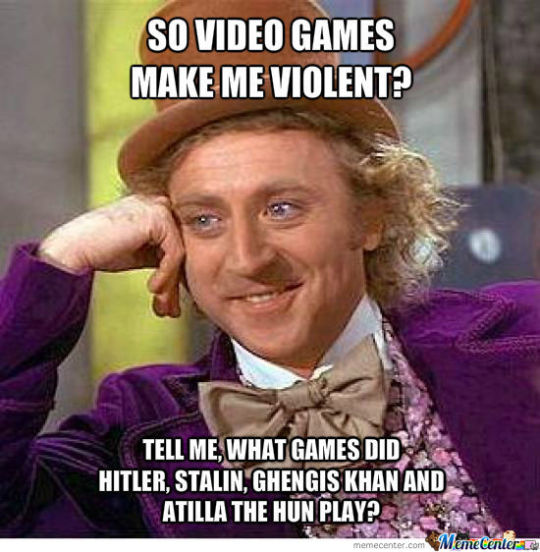
0 notes
Photo
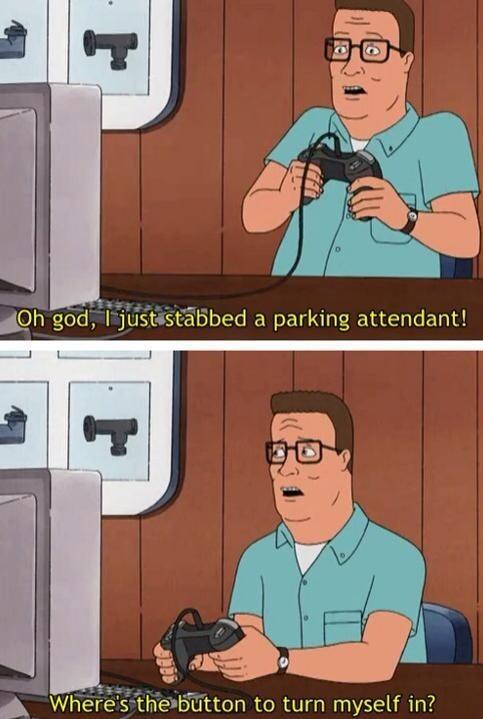
Hank is learning the ways of vidya gaemes. You should too.
1 note
·
View note